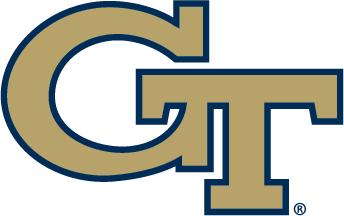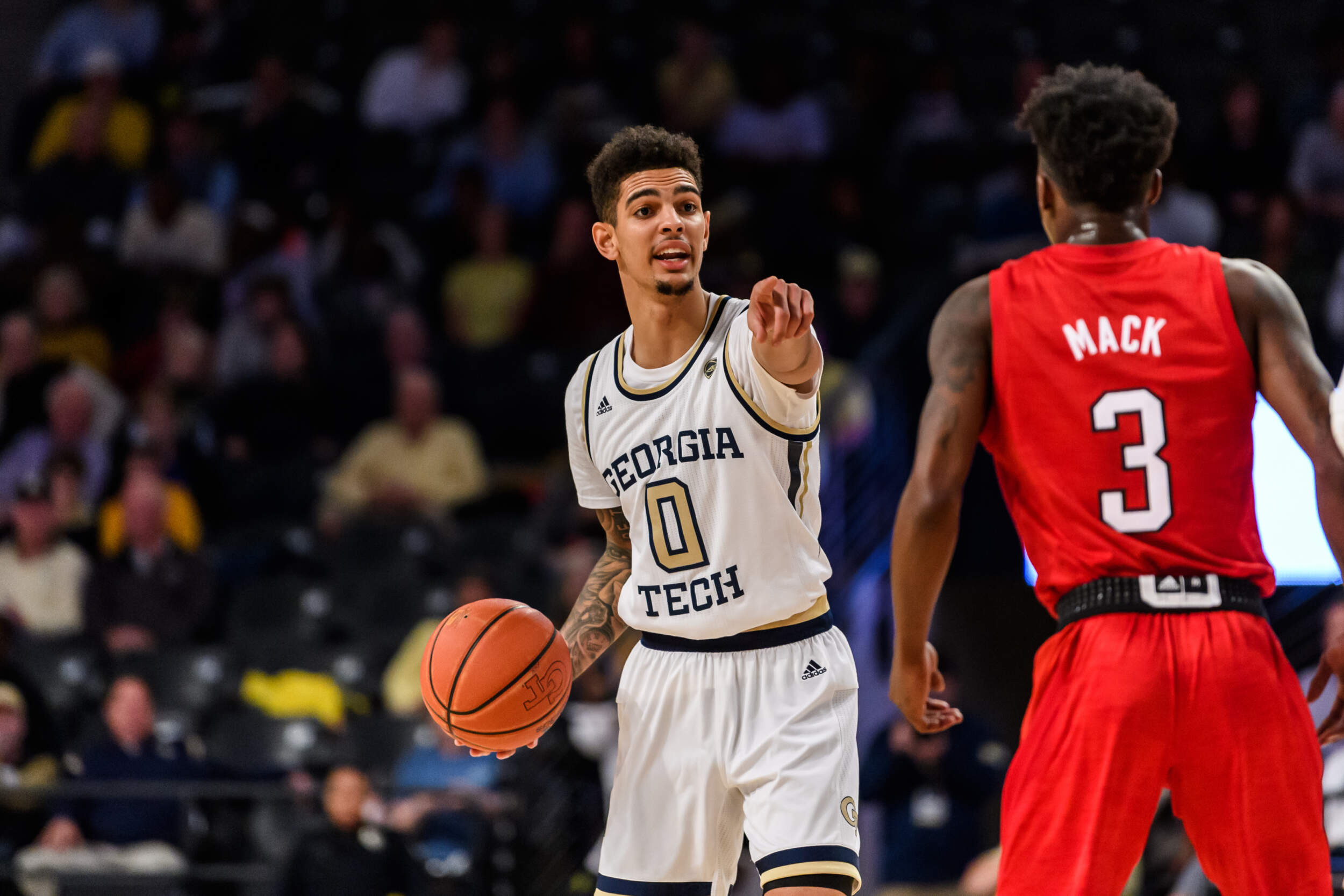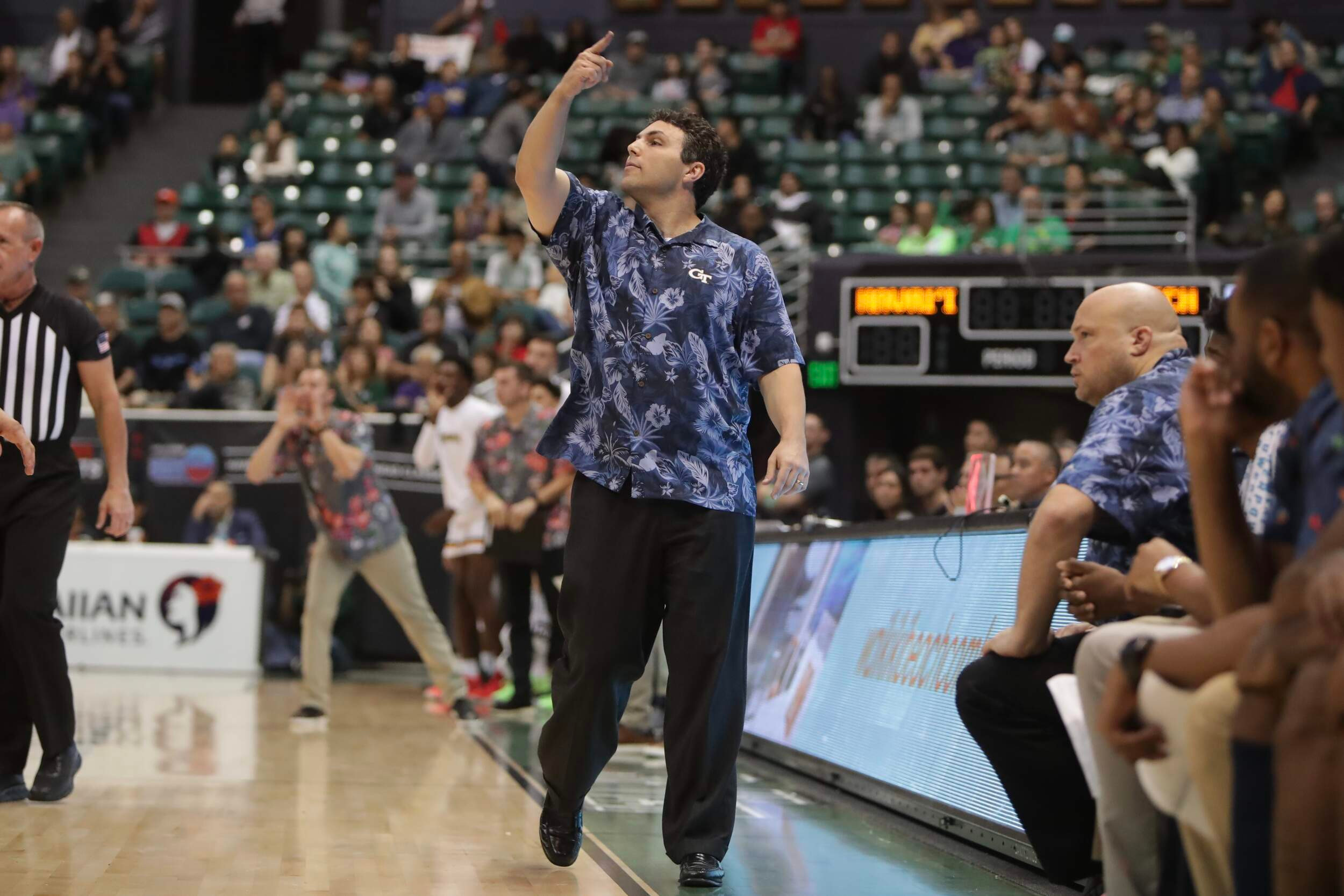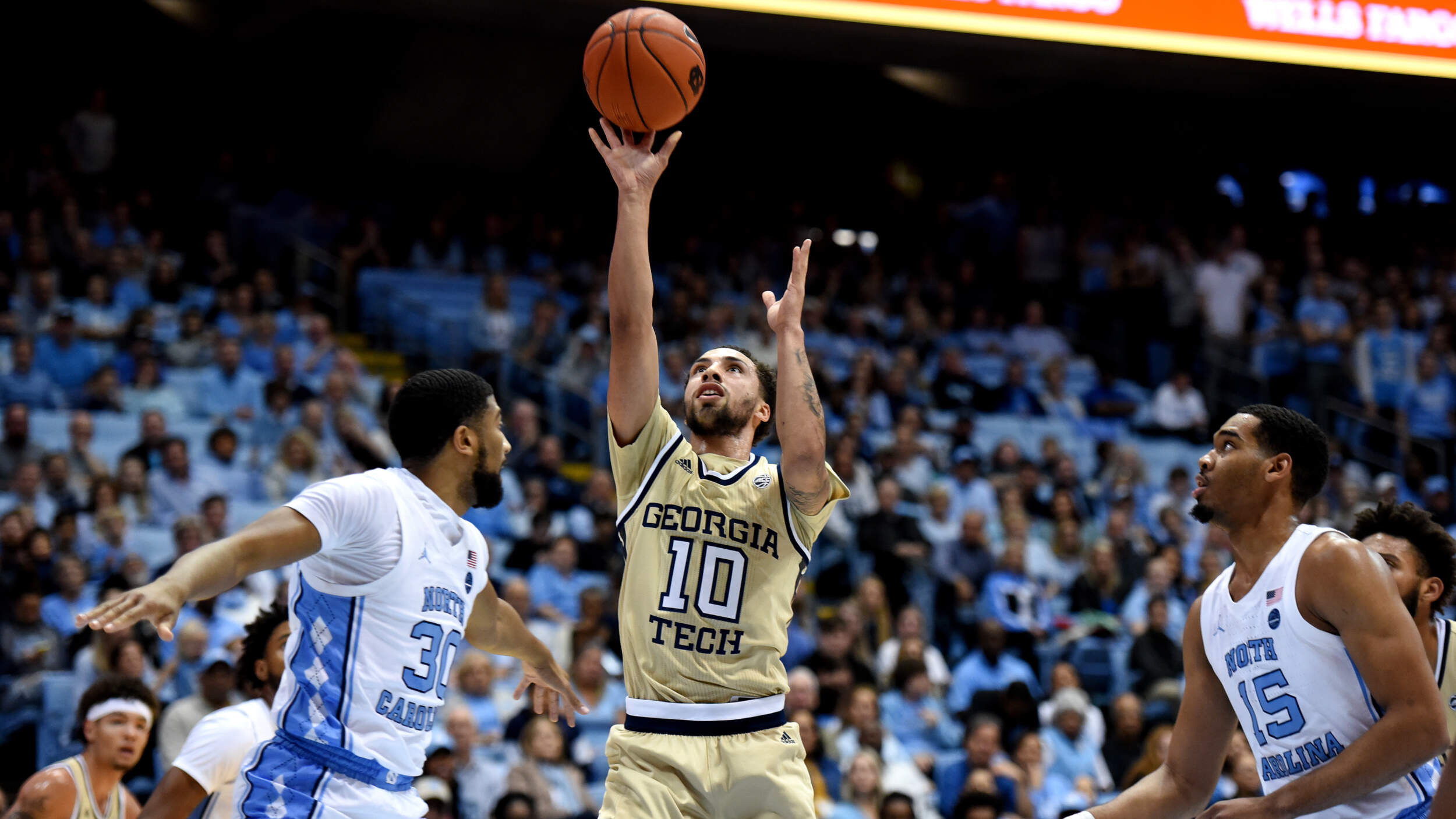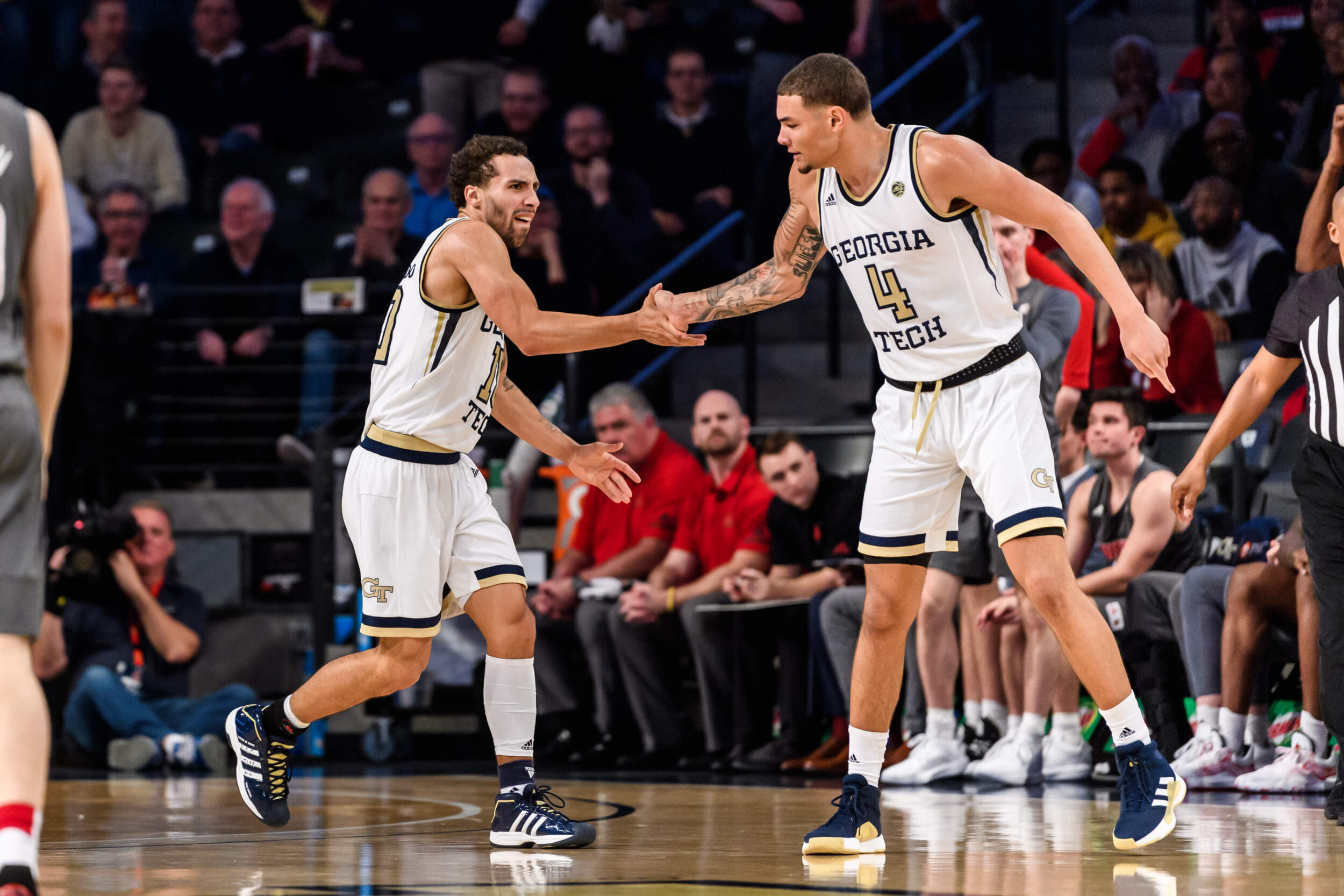By Andy Demetra | Voice of the Jackets
Josh Pastner knew the flight would be tedious.
By the time he took his seat aboard Delta #837, he knew it would be torturous as well.
Pastner and his Georgia Tech Yellow Jackets were headed to Honolulu, Hawaii to play three games in the Diamond Head Classic at the University of Hawaii. Any excitement over a week in paradise, though, had long since evaporated, replaced by a growing sense of alarm. The night before at McCamish Pavilion, Tech was flattened by Ball State, trailing by as many as 30 points before falling 65-47. The loss plunged them to 4-5 overall with ACC play fast approaching.
Georgia Tech didn’t have starting point guard Jose Alvarado, who had missed seven of the previous eight games with a sprained ankle, and had only gotten forward Jordan Usher eligible that night, but for Pastner it did little to salve the sting. Tech’s offense once again sputtered, continuing a two-week stretch where the Yellow Jackets played “bad, bad basketball.” And now, adding to the indignity, the Jackets had to share their 11 a.m. flight with, among others, the players and coaches from Ball State. The Cardinals were also participating in the Diamond Head Classic.
“It was brutal,” Pastner recalled. “When you have an atrocious game like we had the night before, and then the team that kicked your butt is on the same plane with you to Hawaii for a nine- to 10-hour ride. Not only do you get punched in the gut, it’s like getting punched in the mouth.”
Yet as that cramped, cross-country flight unfolded, Pastner hatched a plan that would change the trajectory of Georgia Tech’s season. It was bold, audacious, and virtually unheard-of in major college basketball. Pastner decided his team would scrap its entire offensive playbook, the one it had been running for the past three-and-a-half seasons, and start fresh. In three days, when they took the floor for their opening game against Boise State, the Yellow Jackets would run a completely new system and set of plays.
“It’s a big risk to change something in the middle. It could have gone in the other direction and backfired on us,” Pastner said.
Clearly it didn’t. By the time they knocked off Clemson at Littlejohn Coliseum March 6, the Yellow Jackets (17-14, 11-9 ACC) clinched their first winning conference record since 2004 and racked up their most league wins since 1996. Behind that revamped offense, they ranked second in the ACC in field goal percentage in league play (.462). A team that was picked to finish 12th in the preseason ACC media poll wound up taking fifth place outright.
But before those accomplishments, those hectic 72 hours in Hawaii – from Georgia Tech’s December 19 flight to its December 22 tip-off against Boise State – would be a mixture of angst, risk, resourcefulness, resilience, and reinvention.
Out of those 72 hours, a low point became a turning point.
Michael Devoe led the ACC in scoring and three-point shooting through most of November and early December, but the Yellow Jackets struggled as a whole offensively.
He had no interest revisiting it.
As Georgia Tech’s plane soared out of Hartsfield International Airport, Josh Pastner decided not to re-watch the game film versus Ball State. The idea to change his offense had already germinated, so what was the point? Instead, he pulled out some paper from his travel bag and started scribbling out notes, concepts and potential plays.
“I didn’t sleep a wink. I was kind of playing around with things for pretty much the entire nine-, ten-hour ride,” he said.
For the past three years, Georgia Tech had run an offense based on constant moving and cutting. The ball went through the high post often, with the center responsible for a variety of reads. Three-pointers were low. Backdoor cuts were liberal. Equal opportunity ruled.
Pastner loved the craftiness of his system and the subtle ways it could keep a defense off-balance. He appreciated that his players put an entire offseason of sweat equity into mastering it. But he also sensed that his system no longer fit his current team’s strengths.
“We’re turning the ball over at such a high clip. We’re not rebounding well enough offensively. We’re really struggling to score,” Pastner recalled thinking. Against Ball State, the Yellow Jackets shot 5-of-22 from the field in the first half and committed a season-high 24 turnovers.
Pastner instead envisioned a “pace and space” offense that was heavier on pick-and-rolls and isolation plays for his guards. It would also take some passing responsibility away from the “5” man in the high post, and move him to the alley (the spot on the baseline beneath the block) where he could get more duck-ins and post-ups.
“I’m not a big believer in giving the ball a headache. We did some things post-Ball State where it was giving the ball a headache a little more, but it kept certain guys with the ball,” Pastner explained.
After dinner in the team meeting room that night, Georgia Tech’s coaches stayed behind, where Pastner laid out his plan. They batted around the normal questions: Is this the right thing to do? Should we make tweaks rather than a complete, wholesale change? Should we see how the offense looks when Alvarado returns from injury? (The junior, originally set to return on New Year’s Eve, made the trip to Honolulu and had a chance to play.)
“We had a great dialogue, but in the end, we decided what was best was to scrap that. It’s high-risk, high-reward,” Pastner said.
“That kind of loss is a catalyst for creative thinking and brainstorming. So we were all right there with him in terms of, ‘We’ve got to solve this,’” added associate head coach Eric Reveno.
For about an hour, using a paper easel pad they had co-opted from the meeting room, Tech’s coaches traded ideas on plays that a.) were tailored to their team’s strengths, and b.) could be taught and implemented quickly. Pastner sketched out some plays that he ran at the University of Memphis. His assistants made suggestions on adjustments and personnel. Ultimately the staff decided on three basic plays that it would run against Boise State.
Pastner billed the changes as a “course correction,” but even he understood the stakes. A team’s offense evolves constantly throughout a season – a wrinkle here, an extra play there – but it always stays within the same general scheme and framework. Rarely does it change so fundamentally or dramatically in the middle of a year, as Pastner was now proposing.
“If it worked, it’s going to be really good. And if it doesn’t work, it could really blow up right in front of you, because if you keep changing like that would be terrible,” Pastner recalled thinking.
The Jackets held a team meeting later that night to go over their schedule for the week. At the end, Pastner dropped the news to his players: save for a few ATO’s (“after time-outs”) and baseline and sideline out-of-bounds plays, they’d be saying aloha to their old playbook.
“We had a good talk overall as a team – not in a film session or in an x’s-and-o’s way, but more in a ‘philosophy of life’ way,” Pastner said.
Tech’s 70-53 victory over Hawai’i for a third-place finish at the Diamond Head Classic provided Pastner some validation that the “course correction” was working.
On the surface, adding three plays seems simple. The reality is far more complex. Each play contains multiple “actions” – movements and cuts based on where the ball is passed or a defender is guarding – that causes them to flow differently. Pastner and his staff had to completely re-wire their players’ thinking, teaching them a brand new set of principles that guided their movements on the floor. They had to learn what to do on screens, how to open up angles for drives, and where to space themselves when the ball was in a certain spot.
“It’s more ‘the play after the play,’” Pastner explained.
The coaches refined those plays for another hour the next morning, then held a pre-practice meeting to introduce them to the players. They then bused to the University of Hawaii’s practice gym 15 minutes away, where over the next two hours they installed them on the court. Not a minute of practice time was spent on defense.
“The assistants did one heck of a job teaching, and being able to adapt and be nimble,” Pastner said.
Tech used its practice on December 21 to fine-tune their plays, then added some final touch-ups at its game day shootaround. Its opening opponent, Boise State, wouldn’t provide an easy test subject: the Broncos were perennial contenders in the Mountain West Conference and featured a preseason first team all-conference forward in 6-9 Derrick Alston, Jr.
When they arrived at the Stan Sheriff Center on the afternoon of December 22, the juxtaposition was clear as the Jackets stepped off the bus. Clouds floated lazily across the sky. Palm trees swayed in the warm Pacific breeze. The verdant peaks of the Wa’ahila Ridge hung in the distance.
Against that backdrop of island relaxation, Georgia Tech walked in for its first game at the Diamond Head Classic, ready to debut a high-stakes, high-stress reinvention.
“Man, that was about as much pressure internally [as I’ve ever felt] because we had been struggling,” Pastner said of his feelings before tip-off.
“That was a must-win for us.”
| Category | Before | After |
| Scoring average | 65.4 | 69.9 |
| Field goal percentage | 0.430 | 0.462 |
| 3-point FG percentage | 0.287 | 0.324 |
| 3-point FG per game | 5.2 | 5.2 |
| Free throw percentage | 0.578 | 0.716 |
| FT made per game | 10.7 | 14.0 |
| Assists per game | 13.7 | 13.7 |
| Turnovers per game | 18.1 | 15.5 |
| Turnover margin | -2.9 | -2.1 |
Jose Alvarado scored 26 points and sparked the Yellow Jackets to a season-high 96 points in a Jan. 4 victory at North Carolina, Tech’s first win in Chapel Hill since 2010.
The first 25 minutes didn’t inspire much confidence.
Georgia Tech had welcomed back Jose Alvarado, who was playing his first game since November 20, but the Yellow Jackets were also playing their first game running a new, albeit pared-down, offense. The energy was high – Tech bolted out to a 9-3 lead in the opening minutes – but eventually the shakiness showed. The Jackets committed 14 turnovers in the first half, and foul trouble prevented them from getting into any sort of rhythm. Boise State led 31-26 at halftime, then stretched its lead to eight early in the second half.
Pastner, pacing the sidelines in a Georgia Tech-embroidered tropical shirt, hardly cut the figure of a man in paradise.
“It was hairy. There was no question about that. I was sweating through my undershirt,” he said.
“There were a couple times where I was like, ‘Should we go back to our old offense?’ Because we were kind of struggling a little bit with what I was trying to put in new. But we kind of then got a hang of it.”
Pastner pointed to Alvarado’s abrasive defense as the key, energizing his teammates and giving them a much-needed boost of confidence. Whatever the case, Georgia Tech found its footing on offense. Running variations of the same three plays, the Jackets unleashed a 20-2 run on the Broncos, not committing a single turnover during that span. Usher, who struggled with first-game nerves against Ball State, poured in a season-high 18 points. Junior Moses Wright, playing mostly at center, added 18 points and nine rebounds. Alvarado scored 12 points in the second half, including a pair of rally-repelling threes. After two weeks of “bad, bad basketball,” the Jackets shot 54 percent in the second half (17 of 31) to win 74-60.
“We had to impose our will. That became our mantra. By cleaning things up, our guys started to understand what that meant a little more offensively,” said Reveno.
The win earned Tech a matchup with Houston the next day. Pastner made a few touch-ups to their plays at that morning’s shootaround. The Cougars beat the Yellow Jackets 70-59, but Pastner still felt encouraged. A day later, at practice inside the Stan Sheriff Center, he added another play or two. On Christmas Day, playing in the third-place game against host University of Hawaii, a similar script unfolded as Tech’s opener versus Boise State. The Jackets committed nine turnovers, four of them charges, and trailed 32-29 at halftime.
In the second half, though, the Yellow Jackets found their bearings, making 13 of 23 shots and outscoring the Rainbow Warriors 41-21. One week after losing by 18 points at home to Ball State, Georgia Tech throttled Hawaii 70-53 to capture third place at the Diamond Head Classic. His offense was far from polished, but Pastner felt he had pivoted his team in the right direction.
He sensed it again on the flight home.
“I was able to watch a movie on the plane ride back,” Pastner said.
Jose Alvarado and Jordan Usher exult late during Tech’s victory over No. 5 Louisville on Feb. 12, the pinnacle of the Jackets’ late-season run.
Georgia Tech’s red-eye flight home landed in Atlanta at 6 a.m. December 27.
By 9 a.m., the Jackets were taped up and back on the Zelnak Center practice floor.
“We went right into the gym and did a whole hour of offense again,” Pastner said.
After overhauling his offense and watching it jell at the Diamond Head Classic, the Yellow Jackets’ head coach didn’t want to lose any momentum. The initial results were promising, but would they stand up to the rigors of the ACC? Pastner and his staff continued to workshop more plays and layer them in before conference play resumed at Florida State on New Year’s Eve.
For Pastner, the proof of concept arrived a week later.
“Once we got to North Carolina, it started moving in our direction,” he said.
On January 4 in Chapel Hill, Georgia Tech routed the Tar Heels 96-83, shooting 59 percent to earn its first win at the Smith Center since 2010. As the staff added more wrinkles and counters to its playbook, the milestones only multiplied. Tech beat its first top-5 opponent since 2014 when it upset No. 5 Louisville in February. It beat Clemson on the road for the first time since 2005. It won six straight home ACC games for the first time since 1996. A team whose offense looked moribund in mid-December finished with its highest efficiency ranking in ACC play since 2010.
“I’ve never been a part of a team that improved as much as we did in a lot of different ways from December 15 to February 15,” said Reveno, a 25-year coaching veteran.
Pastner himself said he learned a valuable lesson.
“The Ball State game, the sky was falling. I mean, it was not good,” he said. “If we did not lose to Ball State, I would not have changed my offense. And if we hadn’t hit rock bottom, we might not have changed. I don’t know if we would have done what we had done in the ACC, things that hadn’t been done since the mid-90’s at Georgia Tech in ACC play, if we hadn’t lost to Ball State, because it might not have forced me to change.”
“It just shows you that sometimes things are deeper than they actually look on the surface.”
Down in those depths, the Yellow Jackets gambled on a new offense – and reached heights they hardly could have imagined when they stepped on that plane to Hawaii.
